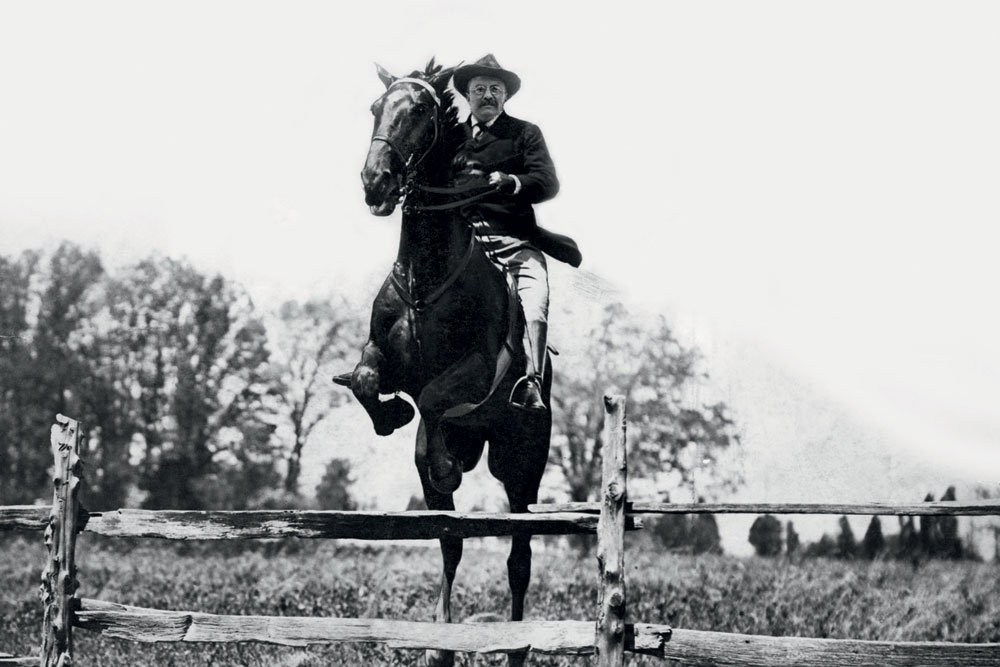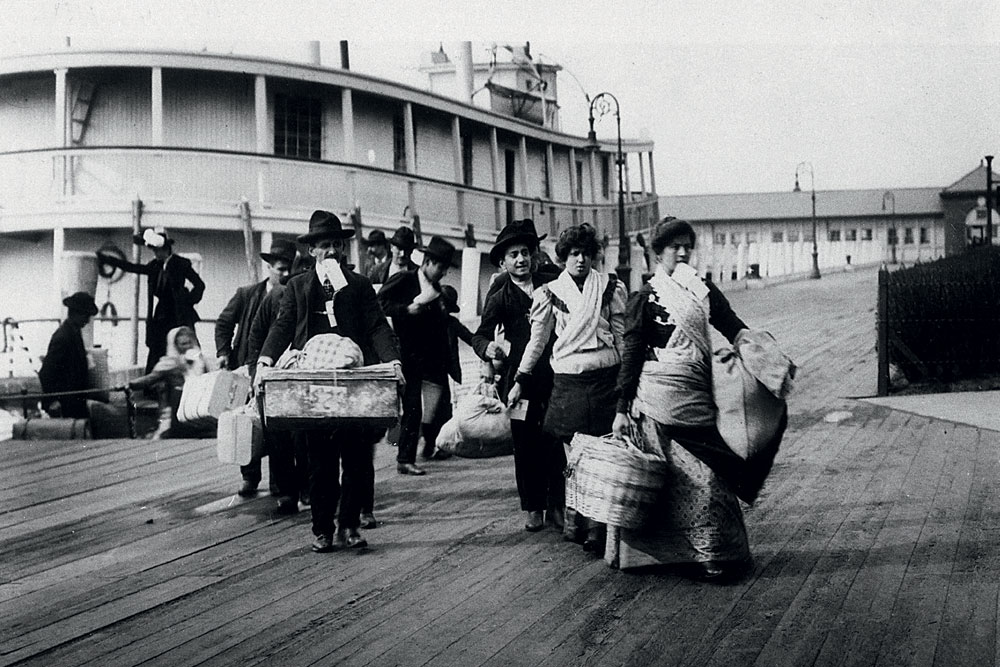An American Tragedy
Have they lost faith and trust in the elected class?
 Keerthik Sasidharan
Keerthik Sasidharan
 Keerthik Sasidharan
Keerthik Sasidharan
 |
06 Nov, 2020
|
06 Nov, 2020
/wp-content/uploads/2020/11/Americantragedy1.jpg)
American Progress by John Gast, 1872 (Photo: Alamy)
For much of the 19th century, any narrative American history was pregnant with two phenomena which the popular historian Daniel J Boorstin described as ‘discovery and growth’. Like siblings, the two were similarly conceived but went on to manifest and proliferate in unforeseen ways. ‘Discovery’ came, most prominently, in the form of efforts to identify, catalogue and disseminate facts about what lay out there—that great expanse of prairie grass and rivers, mountain passes and caves that lay beyond the geographical markers, such as the Ohio and Mississippi rivers which were well explored by early 19th century. For the areas beyond those landmarks, nations of Native Americans had called them for centuries by various names and descriptors. But for much of 18th and 19th century ‘America’—now populated with émigrés pouring in from Europe and slaves captured from Africa—what lay beyond the immediacies of the early states of the American republic was truly a ‘new world’. America—in this limited sense—was like the village of Macondo in Gabriel García Márquez’s novel One Hundred Years of Solitude where ‘the world was so recent that many things lacked names, and in order to indicate them it was necessary to point’. But, unlike in Márquez’s novels, in America men repeatedly discovered what had already been known to a generation earlier.
This blessed cycle of eternal return was thanks to a lack of technologies to communicate widely about new findings as well the simple fact that knowledge about geography, about treacherous mountain passes and the best routes to travel the forested lands was ultimately power and, more importantly, profit. Knowledge, in the face of widespread ignorance, allowed entrepreneurs to improve return on capital by bringing goods to the markets faster and cheaper. But these accounts of discovery were not merely all innocent. The human capacity for deception remained unchanged—be it in the New or the Old World. Periodically, there burst into popular consciousness individuals or groups of men (and occasionally women) who schemed and conspired to take advantage of ignorance about the world. Words abound in the American vernacular for these experts in smoke and mirrors: smooth talkers, snake-oil salesmen, conmen, hucksters, grifters. Some of them painstakingly planned elaborate frauds involving secret diamond-studded fields that lured capital including from a Wall Street hungry for high return on investments; others offered to sell secrets of navigable waterways that crisscrossed the continent and which would lead men and material from the Atlantic to the Pacific, beyond which lay an imagined India. Knowledge had a price and that price was measured in money. On a continent full of ambition and caprice, lies and myths became perennial undercurrents that sometimes dragged the unsuspecting into penury and despair.
Amid all this, there also arose an entire class of mapmakers, printers and draughtsmen who sought to impose structure on the land by naming and marking landmarks. But they often got things wrong and the more fastidious among them insisted that the reality of the world didn’t live up to the theoretical structures deigned by the rules of classical cartography. The famed ‘rendezvous’ system—wherein large groups of trappers and miners, farmers and migrants arrived at specific locations, often places on no map, on specific dates—had little use for cartographical efforts, and the result was a certain derision for those who lived off ‘models’ and ‘representations’ instead of reality itself. The historian of the American West, Bernard DeVoto, writes that men who lived off the rendezvous system ‘did not care if the geographers had moved [a place on the map] a full ten degrees. They went about the blank spaces of the map like men going to the barn. The Great American Desert was their back yard’. The birth of the American distrust of experts, the natural anti-intellectualism that courses through its body politic, was in many ways born from the limitations of how we can record ‘knowledge’ itself. The result was an extraordinary reliance on ‘commonsense’—and what often followed were its pathologies: a suspicion of bookish learning, contempt for abstraction and an inability to manoeuvre in a world where signal and noise often became indistinguishable. Mark Twain, who observed human character better than most, uses this to great effect when his indigent hero Huckleberry Finn willingly, even if discomfited, plays second fiddle to his gregarious friend Tom Sawyer who has certain ‘evolved’ ideas of how to play games. Reactionary angst was the default position of many, who were then granted respectability as conservatives.
THE OTHER twin in the above formulation—‘growth’—came in the form of aggressive expansionism that brought along institutions and technologies, legally and illegally prosecuted acts of violence and terror to the American West. Together, they facilitated the conditions for the creation of a sophisticated market and private property-based industries specialising in cattle, beef, mining and agriculture. In parallel, to offer salvific balms for the weary and the traditionalist among them various versions of Christianity spread. Alongside and perhaps all-too-expectedly, an assortment of self-declared prophets and ecclesiastical groups sprung setting stage for the proliferation of a cultural base where religious faith and communal living often became synonymous.
America—in a limited sense—was like the village of Macondo in Gabriel García Márquez’s novel one hundred years of solitude where ‘the world was so recent that many things lacked names, and in order to indicate them it was necessary to point’
Nowhere is this phenomena of growth seen more vividly, at least on paper, than in the 1872 painting by John Gast titled American Progress. In it, we see Native Indians—feathers in their heads, barebreasted women, some others dancing near their wigwams (huts), others riding on horses and bows—lurch forward while turning past their shoulders to see what was headed their way. In the left hand sections of the canvas, animals such as the bison and the bear seem just as terrified as the Natives. The animals too are on the run from the incoming wave of new settlers against whom all they—man and beast—could do was snarl or hurriedly try to make a getaway. Meanwhile, on the other side of the painting, small groups of (white) men with guns, caravans with women seated inside, stagecoaches marked with insignia that says ‘Overland Mail: US’ are headed down the very same trails left behind by forcible emigration. In another, and more sedentary, corner of the painting, men and their cattle plough and work the newly acquired patches of land. And while all this is unfolding in the background, like one of the Native Indians in painting, we too stare into the skies to be greeted by a strange apparition. A blonde woman flies in the air. Robed in white, like some Roman goddess, her dress improbably dangles above her breasts and the ends of her garment are aflutter in the wind. She has a star etched on her head (‘the star of empire’) and, perhaps most importantly, in her one hand is a manuscript emblazoned as ‘School Book’ and in her left hand is a string which, upon closer inspection, reveals for what it truly is: the telegraph wire. She, that great white goddess of Progress, brings development (or ‘civilisation’ in an older vernacular) through telegraph, railway lines and stagecoaches to vast areas of unnamed lands which are in marked contrast to the cities in the American East. There, on the eastren seaboard, tenements and slums, epidemics and garbage coexist; political ideologies such as progressivism and abolitionism, mercantilism and republicanism thrive and contest for dominance. The earth and its bountiful exigencies are a distant thought.
What that painting and narratives of American history teach us is that the great geographical expanse of the American West acted as both an opportunity to spread out and grow and as a challenge where intangible aspects of organised society—laws, institutions, manners, norms—needed to be redrawn and replenished. Alexis de Tocqueville, the French traveller of 19th century America, writes about a sort of stunning uniformity in how culture was continually reproduced further deep in the American interior, often as simulacra of an imagined culture of the American East. He writes, ‘The man you left behind in New York you find again in almost impenetrable solitudes: same clothes, same attitude, same language, same habits, same pleasures.’ The influential American historian of the 19th century Frederick Jackson Turner wrote in a famous 1893 essay that unlike other countries where growth has often meant replacing one set of social institutions with another—either through conquest or trade—growth and development in America has often been ex nihilo. The mythology of the origins of the American state locates its imaginary prowess in this tale of creating civilisation out of nothing. This, of course, is a simplification of a complex story of human presence that effaces the various Native American nations or even the various white explorers and pioneers who set out well before the 19th century into the American West.

What this myth however does is that it comports with an increased need to craft a common origin story for a nation-state that had not just geographically grown over the course of a century but had also experienced a near-catastrophic Civil War that ultimately forced a rethink what exactly does ‘America’ mean. Thus, the ever expanding geographic size of the country created myths within myths which steadily became indistinguishable from the ideology of the nation-state itself. And from this ideology was born a wilfully generated description of reality that went from a selective restatement of facts to a stronger and seemingly ineradicable belief in the idea that the future of America could only be understood through its past. This, of course, seems antithetical to many for whom America is popularly seen as a land of reinvention, where you can be whatsoever you choose to be and leave your past behind. Yet it is precisely this freedom to choose among various self-descriptions and the resultant tumult in personal lives that follows which have also necessitated the need to repeatedly surrender to the deep lure of a real or imagined past that acts as a fixed idea, an Archimedean spot to pivot one’s self.
From Theodore Roosevelt, who wrote plainfacedly that it was America’s ‘manifest destiny to swallow up the land of all adjoining nations who were too weak’, to more enquiring minds such as the author of great subtlety, Wallace Stegner, many saw the American West as a distinct culture
Turner wrote in his famous essay: ‘The true point of view in the history of this nation is not the Atlantic coast, it is the great West.’ This has often been a view that has found advocates in men as diverse as President Theodore Roosevelt who wrote plainfacedly that it was America’s ‘manifest destiny to swallow up the land of all adjoining nations who were too weak to withstand [them]’ to more enquiring minds such as DeVoto or an author of great subtlety such as Wallace Stegner who saw the American West as a distinct culture. If the overwhelming mood of the mythologies of the American West in much of the early part of the 20th century was triumphant, by the 1980s, this retelling of how the West came to be part of America was marked by heavy overtones of the tragic. In the post-Vietnam War era, the leap from what was wrought in the paddy fields of Southeast Asia in the name of fighting communism to the decades-long genocidal decimation of Native Americans was an inevitable and easy historical parallel to many. Charges of ‘settler colonialism’ were now easily laid, much to the chagrin of everyday politicians and the average traditionalist voter who saw these lands and the society built upon them as a consequence of the extraordinary labours of his forefathers. This, of course, is true. The amount of backbreaking labour, the long years of loneliness and cold, the stubborn will to survive and eventually set down a way of life—all of this is almost unimaginable to us today. But, much like this truth, the other side of the very same story where the expansionist nature of what the white settler colonies and their capitalist institutions had unleashed is also true—great pain, genocidal murder and suffering of the Native Americans. The tragic lay in two great truths: a story of wilfulness to transform the world; and another, a story of consequences of that very same wilfulness—having to contest, like prize fighters, to be declared as the sole winner.

WHILE THESE great churns played out over the course of a century, between these contesting and sometimes collaborating explanatory frameworks to describe the past, what arose from those turbulent waters was the behemoth structure of the American state—armed with real and legal weaponry as well as an elaborate bureaucratic structure that progressively sought to lay claims on how people ought to live. From everyday routines such as seatbelts and retirement provisioning to life events such as marriages and divorces, the state became the arbiter which often imposed from above. This, predictably, led to resentments as well as a sigh of relief. The resentments—an echo of the discontent many British have felt towards Brussels under the European Union—have periodically manifested with complaints about Washington DC and its coastal elites who want to ‘ban Christmas’. Meanwhile, a sigh of relief has often involved underprovisioned local officials who seek federal help to coordinate on various matters—‘problems without borders’—involving crimes, environment, taxation and more. Viewed differently, the history of American political economy has been annotated by a steady erosion of local norms in favour of supralocal rules. The result of this push and pull has resulted in a society where rules of contestation have proliferated, been codified and in turn have gone to create a class of legal specialists in procedure and precedent, who in effect run the country. Power, in more ways than one, has shifted from the barrel of the gun to the gavel of a judge. Meanwhile, the state and its accoutrements that claim and impose legitimacy have steadily become the site where people’s efforts to formally redescribe their standing under law and with each other have found their greatest expression. From the suffragette movements of the 1910s to the civil rights movement in the 1960s to the gay rights movement in the 1990s, the great American civic battles have often been ones where the ultimate goal has involved trying to expand the state’s understanding of what inclusion means and to formally protect the resultant equality under law.
Various sections of the Federal government have raced to the bottom of any opinion poll regarding trust. According to one popular meme, the senate majority leader Mitch McConnell polls worse than stale sushi rolls sold at gas stations
Concurrently, following the Great Depression of the 1930s, the American state expanded its role as a provider of varying forms of economic safety. This came about, particularly, thanks to the creation of many new agencies through executive fiat. Frances Perkins, who served as the Labor Secretary under President Franklin D Roosevelt in the 1930s (‘[FDR’s] moral conscience’ is the subtitle of a 2009 book on her), served as the galvanising force behind ideas—minimum wage, unemployment compensation, health insurance, etcetera—that are now taken for granted today. All debate has shifted to questions regarding how to provision, how much to pay and other details. In short, over the past century, the American state has had to transform itself into a guarantor of more finely defined claims of equality and freedom as well as become a provider of economic safety and protection. Whereas the original 18th and 19th century myths of discovery and growth fuelled the scramble to define the outer edges of the American nation, in the 20th century the American state consolidated and codified the extent of its writ and power. Implicit in this painfully debated and fought over governance framework was also a very high amount of trust—at least among the majority white population—in the government eventually doing the right thing after, to wit, having exhausted all other options.
BY 2020, however, various sections of the federal government have raced to the bottom of any opinion poll regarding trust. According to one popular meme, Senate Majority Leader Mitch McConnell—a powerful, and aggressively dull, operator on the conservative side—polls worse than stale sushi rolls sold at gas stations. It is tempting to read too much into such partisan views, but the truth remains that there has been a steady and secular decline over the past 50-odd years in trust and confidence in the American government. David Bromwich, a biographer of Edmund Burke’s intellectual journey and an interpreter of the American present, traces the source of this decline to the days of the Vietnam War when widespread instances of governmental ‘deception’ were systematically revealed, particularly through a series of exposes called the Pentagon Papers. Furthermore, the custodians of law and political norms in both Houses of government began a mutli-decade lurch to cede more power to the institution of the presidency. The result of this was a steady transformation of the executive wing of the government into an imperial office—which included illegal prosecution of global wars without explicit approval (or more accurately, with questionable complicity) from members of both Houses of the government. Add to this, the rise of 24X7 media, which resulted in the transformation of the presidency into a site for celebrity—the apotheosis of that phenomena being Barack Obama.

It is therefore little surprising that faced with such crises of confidence in the idea of government itself, a great populist undercurrent that trafficks in the foundational myths of the country has repeatedly found salience—at least since the days of Barry Goldwater and George Wallace in the 1960s to Donald Trump during 2020. By our times, this theme about harkening back to some mythical past has metastasised in extraordinary ways that has included its most quixotic manifestations such as treating recommendations to wear masks during the pandemic as signs of governmental oppression. What further complicates this story is that over the past three decades, new waves of immigrants and their children have steadily made their presences felt in American public life. Its courts, televisions, financial markets, cinemas and even boardrooms have steadily become browner and blacker in complexion—a demographic that doesn’t read the originary mythologies of America with the similar kind of bonedeep conviction that a tale of white dominance was indeed the past. The result is an increasingly steady disconnect between what exactly constitutes the idea of the nation. This is, perhaps, most visibly seen in the voting patterns of big cities and their suburbs—all fast-growing, diverse, educated with four-plus years of college education and employable in a global commerce—who vote in diametrically opposite ways to their fellow citizens in rural counties, who are typically more traditionalist and conservative.
Over the past three decades, new waves of immigrants and their children have steadily made their presences felt in American public life
All of this poses an extraordinary dilemma for any incoming administration of either party because at the heart of their travails is the question: how to restore trust in the government among a cross-section of people who have invested great emotional energies to sustain the mythologies about the origins of the nation-state. This is a curious state of affairs—where the government is distrusted but the idea of the larger and older collective still holds sway. Part of the answer to that is a wilful devolution of power which has been amassed by the executive wing over decades. But this is a high-risk strategy, when viewed from the White House’s perspective, especially in a political climate where gridlocks characterise the House of Representatives and the Senate, where stasis is seemingly a feature and not a bug of the system. The consequence is that all presidents—across party lines—have continued to amass more power to ostensibly get things done without the hassle and tedium of having to engage with the deliberative branches of the legislature. In this sense, the very constituents that allowed a nascent state and its burgeoning bureaucracy to graft itself upon a vast geography—while facilitating the genocidal elimination of previous inhabitants and yet borrow freely from the valorising myths and struggles of its early pioneers—eventually acquires the burnish of a self-evident truth. America, Walt Whitman said, contains multitudes and contradictions and he was okay with it; but that was the America of the 19th century. By our times, however, these contradictions have been codified into law by different interest groups—all of which traffic in their favourite myths of identity and purpose in the name of the people, who ironically have steadily lost faith and trust in all whom they elect to speak and act on their behalf. That, in the ultimate reckoning, may very well be the real tragedy of American democracy.
About The Author
MOst Popular
3

/wp-content/uploads/2025/07/Cover_Crashcause.jpg)












More Columns
Bihar: On the Road to Progress Open Avenues
The Bihar Model: Balancing Governance, Growth and Inclusion Open Avenues
Caution: Contents May Be Delicious V Shoba